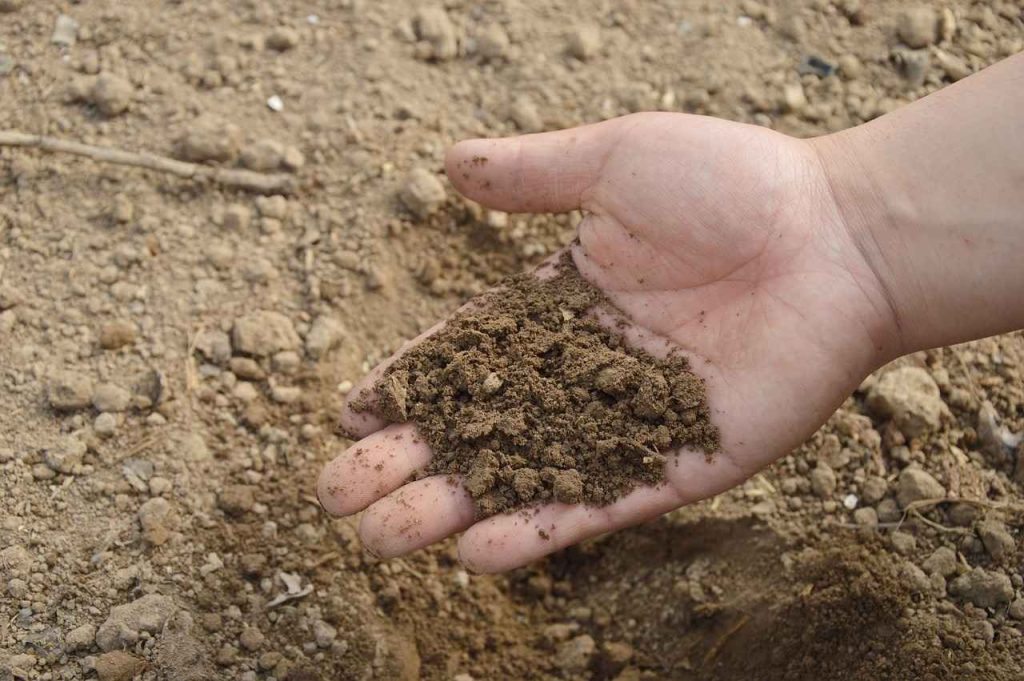Soil type refers to the physical and chemical attributes of soils, such as texture, structure, pH level, nutrient content, and water retention capacity. Each soil type has distinct characteristics that can influence the growth and yield of crops.
Australia possesses an extensive land area of around 7.6 million square kilometres. Its diverse topography encompasses a wide range of landscapes, from immense deserts and leafy rainforests to rugged mountain ranges and extensive coastlines.
This remarkable diversity of terrain also gives rise to a multitude of different soil types, each possessing its own distinct properties and features.
The soil types in Australia exhibit not only remarkable diversity but also uneven distribution throughout the country. The allocation of soil types is frequently influenced by factors such as topography, geology, climate, and vegetation cover.
For instance, red soils, enriched with iron oxides and aluminium, are typically prevalent in regions with semi-arid to arid climates, such as central Australia. On the other hand, black soils, which contain high levels of organic matter and minerals, are usually found in regions with extensive vegetation cover, like the tropical savannas in northern Australia.
Familiarising yourself with these varied soil categories is of utmost importance for land managers, policymakers, and farmers to make sound decisions regarding sustainable land and soil management practices.
Farmers must possess knowledge about different soil types because it enables them to make well-informed decisions regarding crop selection, water and nutrient requirements, and appropriate soil management techniques.
Sandy soils, with their large particles and low water retention, can create challenges for crops in accessing adequate moisture and nutrients, while clay soils, composed of small particles with high water retention, may cause drainage issues and limit root growth.
Familiarity with the soil characteristics on their land can help farmers select crops that thrive in the soil type and determine the appropriate amounts of water and nutrients for optimal growth.
Moreover, understanding soil types can assist farmers in employing effective soil management techniques, such as cover cropping, crop rotation, and fertiliser application. Cover crops can enhance soil structure and nutrient content, while crop rotation helps to prevent soil erosion and minimise the accumulation of pests and diseases.
Apart from agriculture, Australia’s soil types are vital in supporting industries like mining, forestry, and construction. Recognizing the soil types’ traits in these sectors is critical to identify potential environmental impacts and design suitable measures to minimise them.
Read on to explore different types of soil in Australia!
Red Loam
The red loam soil is a common soil type in Australia more specifically in Queensland and New South Wales, displaying a distinctive reddish-brown shade attributed to its high iron oxide content. It is renowned for its exceptional moisture retention capacity, rendering it a suitable choice for farming purposes in regions that have scarce water resources.
The composition of red loam soil is usually a blend of sand, silt, and clay, with a significant percentage of clay particles. As a result, the soil possesses a delicate texture and robust structure, enabling it to remain cohesive and endure erosion.
Red loam soil’s fertility is a significant advantage. The soil contains substantial amounts of organic matter and can retain moisture, making it an ideal selection for cultivating crops like wheat, barley, and canola.
Despite its advantages, Red Loam Soil has some limitations. Its fine texture makes it susceptible to compaction, especially in regions with frequent heavy machinery use, resulting in difficulty for plant roots to access the necessary nutrients for growth.
Furthermore, the soil’s high clay concentration can lead to drainage difficulties, such as waterlogging, posing additional challenges for soil management.
In brief, red loam soil is a significant and valuable soil type in Australia, with both advantages and drawbacks for agricultural purposes. Its unique characteristics make it a suitable choice for certain crops. Nevertheless, appropriate soil management is vital to ensure the soil’s long-term fertility and productivity.
K4 Disc Chain is designed for loam soils, this mid-weight replaceable disc is built to provide superior weed control.
Sandy Loam
Sandy loam soil, which is a common soil type in VIC, is a blend of sand, silt, and clay particles. The soil’s texture is grainy due to the higher proportion of sand particles, providing a porous structure that promotes drainage and aeration.
This type of soil is ideal for crops that require excellent drainage and access to oxygen for their roots like mung beans, oats and maize. Sandy loam soil, however, is typically low in nutrients, requiring regular applications of fertilisers and soil amendments to sustain productivity.
Additionally, the soil’s high permeability leaves it vulnerable to erosion and leaching, and it may struggle to retain moisture in low rainfall areas. Effective management of sandy loam soil, including the regular addition of organic matter, is necessary to maintain its fertility and productivity in the long term.
CL1 Disc Chain not only levels the soil effectively but also contributes to preserving soil health and moisture, resulting in an accurate seedbed.
Heavy Loam
Heavy loam soil, also known as clay loam soil, is a prevalent soil type in the Victoria region of Australia. This type of soil is characterised by a high concentration of clay particles and moderate levels of organic matter. When wet, heavy loam soils tend to be sticky, and when dry, they can be hard.
Although Heavy Loam soils are usually fertile, they may suffer from waterlogging if the drainage system is insufficient. Additionally, they can be challenging to work with, especially when damp, and may necessitate enough labour to cultivate. Despite these obstacles, these soils are highly prized because they retain moisture and nutrients, which are crucial for crop growth.
Crops like cotton and canola are grown in Victoria using Heavy Loam while practising minimum tillage.
Kelly Tillage CL2 Disc is a highly durable farming equipment mainly for heavy soils. Its unique design allows it to cut through even the hardest of the soil, without going too deep.
Calcarosol
The primary cause of the high alkalinity in Calcarosols is the significant amount of calcium carbonate they contain. These soils have limited agricultural potential due to their low fertility and commonly contain excessive levels of salt and boron. Calcarosols are primarily found in South Australia, typically not located near the coast.
Sodosol
This soil type has sodic subsoils, which means that there is a high level of sodium in the lower layers of the soil. This can make the soil dense and compacted, with large, clunky clumps of soil.
Sodosols are a type of soil found in the Wimmera region of Australia, and they can be found in different types of areas, such as flat plains or low hills.
When the soil gets wet, it can break apart easily and become loose, making it harder for roots to grow and access water and nutrients. This restricted movement of roots and water through the soil can affect crop yields, making it difficult for farmers to grow crops successfully.
Proper management practices, such as the addition of gypsum to improve soil structure. The level of sodium in the soil can be decreased by adding it. Gypsum contains calcium, which can replace the sodium ions present in the soil.
This replacement can lead to a reduction in soil alkalinity, which is beneficial for crop growth. Moreover, improved soil structure resulting from the use of gypsum can enhance water infiltration and retention capacity of the soil, ultimately leading to better crop yield.
Tenosols
Tenosols are a type of soil that doesn’t have well-defined layers like some other soils. This is because they have a weak profile development. In Australia, Tenosols are classified based on the amount of clay in a layer below the topsoil and the presence of colour changes.
They are found in areas where there is little soil development, such as rocky areas in the uplands or on deposits from wind or water.
Tenosols can be found in several areas across Australia, such as the east and southeast of Seymour on granitic and acidic volcanic terrains, and near the Murray River on alluvial and aeolian deposits.
Conclusion
Discover the diverse range of soil types in Australia with our comprehensive guide. Learn about the unique characteristics, locations, and agricultural potential of each soil type found throughout the country. Gain a deeper understanding of the implications of soil types for sustainable agriculture in Australia.
Australia has a wide range of soils. These soils vary from deep and fertile to nutrient-poor sandy soils, and everything in between. Kelly Tillage System offers top-quality farm equipment to ensure efficient soil management across all soil types. The Kelly Prickle Chain is an excellent choice for smoothing out soil.


